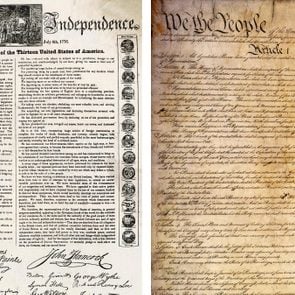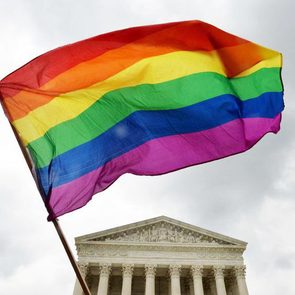How Many Justices Are on the Supreme Court?
Updated: Jun. 29, 2022

There's a set number now, but it has fluctuated since the late 18th century.
The Supreme Court has seen its fair share of newsworthy events over the last few years. These include the passing of the legendary Justice Ruth Bader Ginsberg in 2020, the confirmation of Justice Amy Coney Barrett the same year, and most recently, the confirmation of Ketanji Brown Jackson to succeed the retiring Justice Stephen Breyer. Judge Jackson, once sworn in, will be the first Black woman to sit on the Supreme Court.
All these events may have sparked your curiosity about America’s highest court. You may wonder, “Why do Supreme Court justices serve for life?“, “Why do justices wear black robes?“, and “How many justices are on the Supreme Court?” There are some interesting notes about that latter question, by the way. Read on to learn exactly how many justices we have on the Supreme Court and how that number came to be.
How many justices are on the Supreme Court?
Who is the chief justice of the United States now?
Are there always nine Supreme Court justices?
The number of Supreme Court justices through the years
Be it enacted by the Senate and House of Representatives of the United States of America in Congress assembled, That the supreme court of the United States shall consist of a chief justice and five associate justices, any four of whom shall be a quorum, and shall hold annually at the seat of government two sessions, the one commencing the first Monday of February, and the other the first Monday of August.
Since 1789 Congress has changed the maximum number of justices on the Court several times, with a bit of a tug-of-war in 1801. In short, the Judiciary Act of 1801 was passed by President John Adams and Congress to reduce the number down to five justices, but then-incoming President Thomas Jefferson repealed that act and put the number of justices back up to six. In 1807, less than two decades after the Judiciary Act of 1789, one more justice was added to the Supreme Court, for a total of seven.
In 1837, 30 years after the first major change, the number of justices increased to nine. The highest total number of justices was in 1863 when there were ten. That didn’t last for long, however. The number of justices decreased in 1866 to seven due to the Judicial Circuits Act. The current number of nine justices has been set since 1869—a period of more than 150 years.
Many of these decisions and the changes to the number of justices on the Supreme Court of the United States were due to politics. Will the number of justices change yet again? Only time will tell.
- Supreme Court of the United States: “Justices”
- History.com: “7 Things You Might Not Know About the U.S. Supreme Court”
- Britannica: “Why Are There Nine Justices on the U.S. Supreme Court?”
- National Constitution Center: “Why does the Supreme Court have nine Justices?”






















